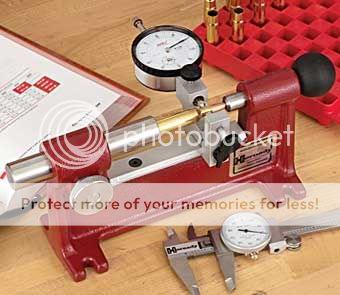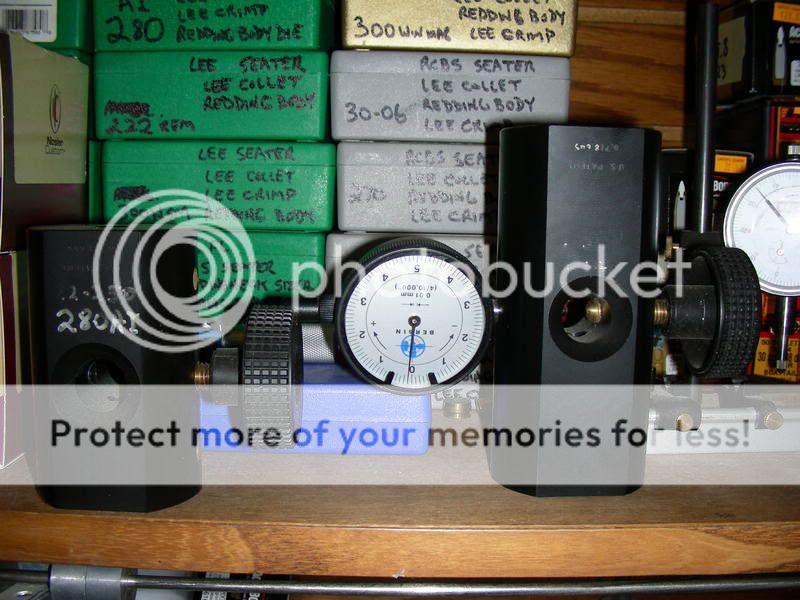mo
Well-Known Member
I knew from the first time I laid my eyes on one of these it was going to be something to aggravate me! So what do you guys think is acceptable run out on a f class rifle? What about a hunting rifle?
When I went to pick my buddy up for a match he had one of these gauges. I said let me try that out. I had some that were 11 thousands out. I think it is great to find problems with a persons reloading techniques or equipment. It happen to be the equipment, that expensive competition Redding bullet seating die. I had to drill the bullet seating stem to accept the the berger bullets.
This is what I've noticed so far with my gauge. Lee and Hornady makes just as good ammo as the more expensive Redding dies even though I like them better.
I loaded 30 rounds this weekend 10 with a single stage 10 with a Redding turret , and 10 with a Dillon 550 progressive all were 35 Whelen remington new brass. There were no difference all had about 2 thousands run out.
I also will give this guy a plug. I only talked to him on the phone so I don't know him, but his gauge works great, and the best part is you can fix the really bad ones. Concentricity Gauge
When I went to pick my buddy up for a match he had one of these gauges. I said let me try that out. I had some that were 11 thousands out. I think it is great to find problems with a persons reloading techniques or equipment. It happen to be the equipment, that expensive competition Redding bullet seating die. I had to drill the bullet seating stem to accept the the berger bullets.
This is what I've noticed so far with my gauge. Lee and Hornady makes just as good ammo as the more expensive Redding dies even though I like them better.
I loaded 30 rounds this weekend 10 with a single stage 10 with a Redding turret , and 10 with a Dillon 550 progressive all were 35 Whelen remington new brass. There were no difference all had about 2 thousands run out.
I also will give this guy a plug. I only talked to him on the phone so I don't know him, but his gauge works great, and the best part is you can fix the really bad ones. Concentricity Gauge


